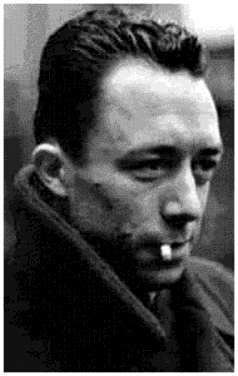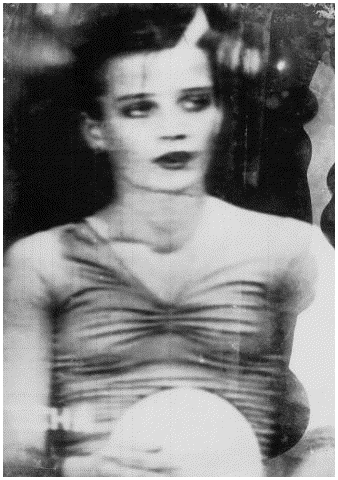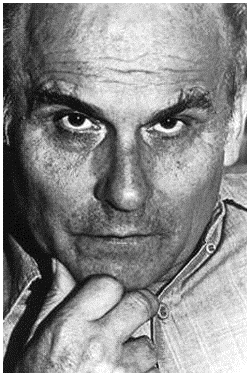The Human Condition
Selected Essays and Reviews
Geoff Dyer
(Graywolf Press)

By the time we get to the burning ghats of Benares, Jeff Atman is taken over by the Hindu spirits, along with Maya and the gods ... as is the reader. I wrote in my review, "I think I haven't read a better tale of a man being seduced." Not by his vamps of Venice, no; "by another culture. And what a culture, what a vision, what a seduction."
- Atman is no longer the English writer on assignment from the Telegraph, sickened by the carcasses, the filthy kids, the crap everywhere, appalled by all he sees. No, he becomes a part of Varanasi, turns thoughtless (can that be the right word?) ... a disciple of the otherness that is India.
The Human Condition captures some of Dyer's critical if not literary verve. His vision of photography and photographic art are beyond reproach. For instance, he explains that the great move forward in photography was not the coming of color, nor the discovery of photography itself, but (quoting Walter Benjamin) ... the invention of faster film and new lenses. "Soon advances in optics made instruments available that put darkness entirely to flight and recorded appearances as faithfully as any mirror."
One of Dyer's favorite photographers is the late Miroslav Tichý, of Kyjov, Czechoslovakia. He was born in the first part of the 20th century, grew up a man so poor that he had to build from scratch his own studios, enlargers, developers, and cameras.
 In a recent showing of his art, says Dyer, "The first things on display are Tichý's cameras and lenses, looking as rusty and as old as weapons unearthed from the battlefields of the First World War." His subjects: women. Not paid models, certainly ... he never had the funds for that. Tichý's method of sorting, storing and saving his works of art?
In a recent showing of his art, says Dyer, "The first things on display are Tichý's cameras and lenses, looking as rusty and as old as weapons unearthed from the battlefields of the First World War." His subjects: women. Not paid models, certainly ... he never had the funds for that. Tichý's method of sorting, storing and saving his works of art?
- Once developed and printed, the pictures were subjected to a protracted form of editorial hazing: left out in the rain, used as beer mats or to prop up wobbly tables ... Sometimes he'd frame the pictures with a specially chosen mount: a garbage sack, say, or a bit of squiggled-on card.
Tichý had a showing at the Pompidou a couple of years ago, and one of the works had been "gnawed by the rats with whom the artist shares his home." Dyer makes the apt comparison to Van Gogh: "Here is a paranoid old man with a history of mental illness, unmarried, childless, so habituated to austerity that he has no need of money, whose work and legacy have been surrendered to those who find themselves in control of an extremely valuable body of work."
Dyer meditates tellingly about the risks and rewards of being photographed by the likes of Richard Avedon. Your portrait --- and by extension, you yourself --- become famous because Avedon has done you. Lee Dawson said that Avedon might make your face look like "a bag of spanners," but, still, you had been elected to the club.
Dyer is at his best in this kind of critical writing, and the articles on Enrique Metinides, Ruth Orkin, Alec Soth, Willima Gedney, and Avedon are among the best in this volume. Because of the paucity of photographs in this section (titled "Visuals)," it occurred to us that these first nineteen chapters could have made up their own volume ... essays coupled with a hundred or so full-page photographs to lend power to the words.
Graywolf seems to have invited Dyer to publish all of his recent writings, so there is the feeling of overkill in The Human Condition. Even so, we like the odd details he comes up with. Seeking Camus' birthplace, he observes the art of the language. A sign in Arabic "looks like handwritten water, it flows."
- The characters have no beginning and no end. Even the sign for the Banque Nationale d'Algier looks like a line of sacred poetry: elongated, stretched out like a horizon of words.

This essay is a tribute to one of the best journalists of the last half-century. But Dyer lets us down when he comes closer to home. In a ho-hum chapter telling of his discovery of the best doughnut in the world (something from the Doughnut Plant in New York City --- he calls it "the doughnut experience"), he starts out with a riff about his flat in London. He lived on Effra Road, and the word "Effra" appears nine times in one paragraph. Dyer is here begging for an editor. Or else wants us to know how this street is thoroughly engraved on his memory.
But if we have problems with Dyer's words, we can also be charmed when he uses that art of repetition with flair. Here is everything above him when he gets to hitch a ride on an old MiG-29 fighter plane in Russia:
- Except for the scars of old vapor trails, the sky is deserted. It has that special kind of blue you never see from the ground, even on the clearest day: an empty, limitless blue, a nothing blue...